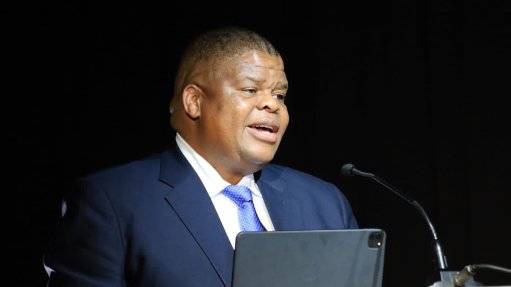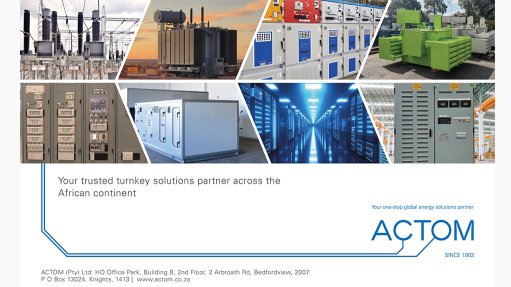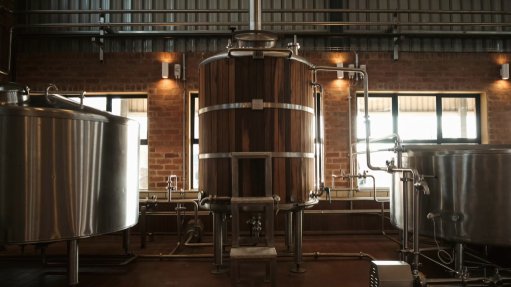Vedanta approves R8.7bn Gamsberg-Skorpion integrated zinc project

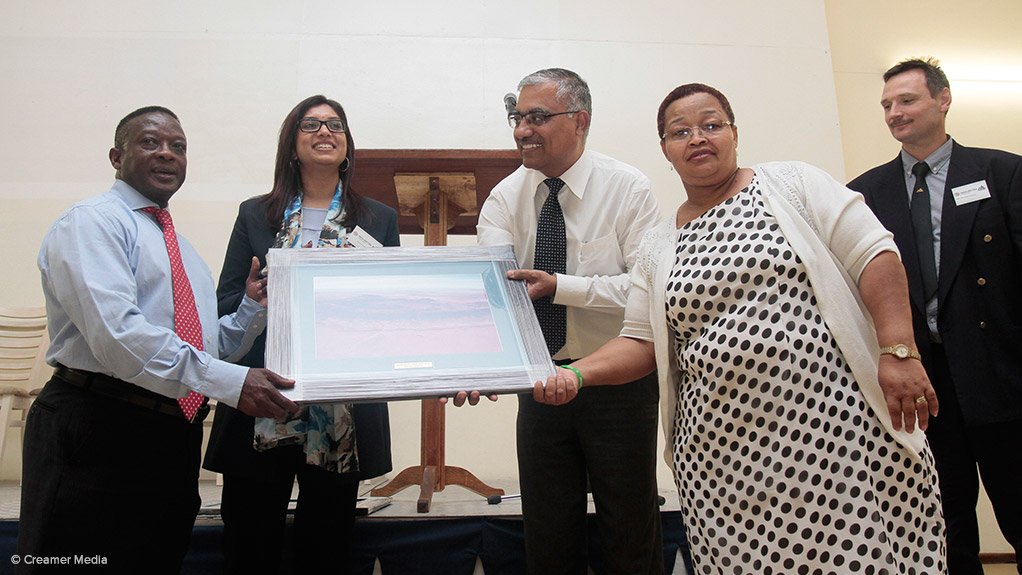
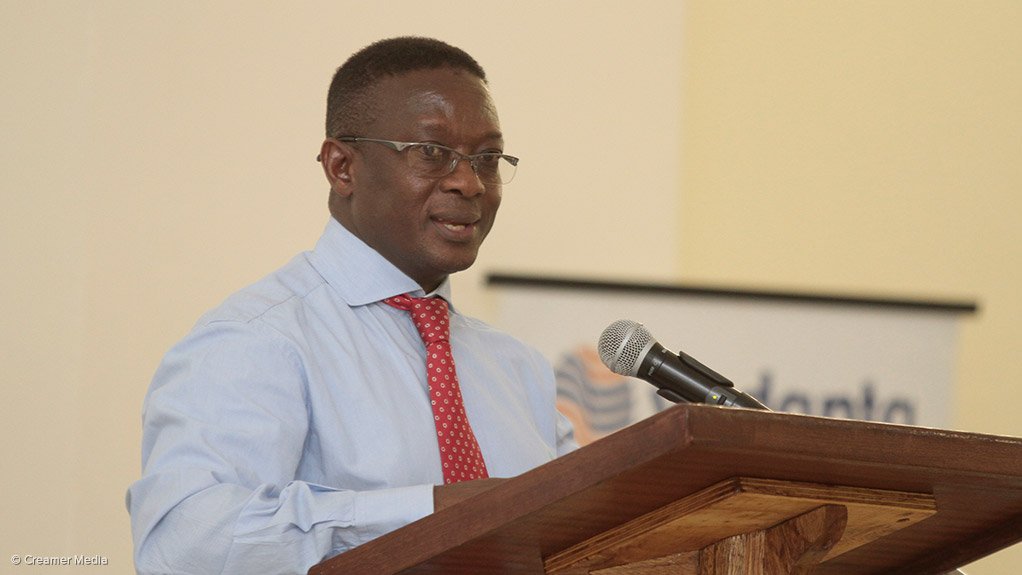
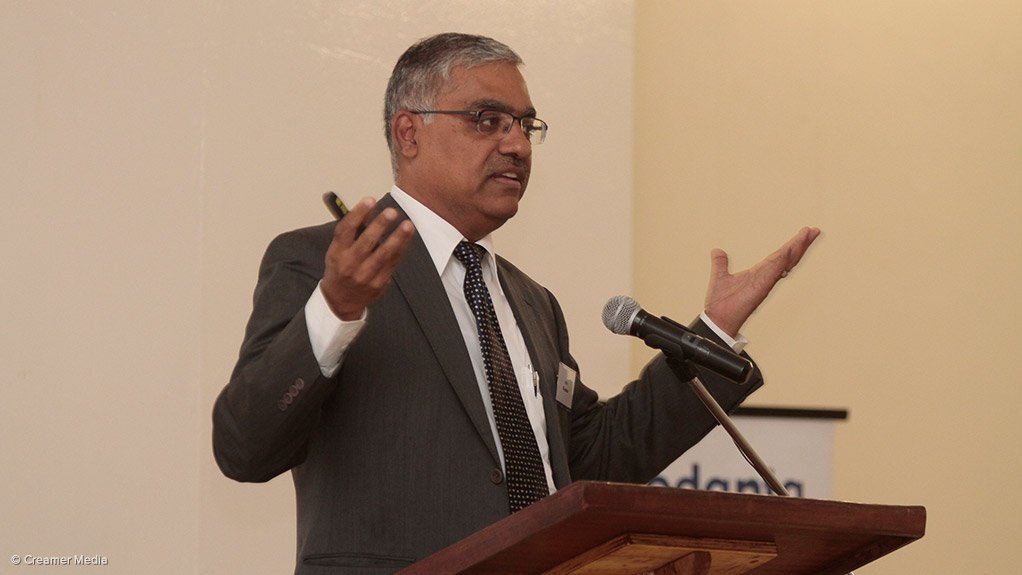
ON THE MAP The three-year R8.7-billion Gamsberg–Skorpion integrated zinc project is set to put South Africa’s Northern Cape on the map as one of the most important suppliers of refined zinc globally
Photo by Duane Daws
GODFREY OLIPHANT South Africa cannot continue to mine and export ore and other raw materials for processing elsewhere
Photo by Duane Daws
KISHORE KUMAR The Gamsberg–Skorpion integrated zinc project is also central to Vedanta’s long-term aspirations for Southern Africa
Photo by Duane Daws
LSE-listed diversified miner Vedanta Resources, which announced the approval of the three-year R8.7-billion Gamsberg-Skorpion integrated zinc project development last week, aims to make the Southern African region one of the most important suppliers of refined zinc globally.
This was highlighted by Vedanta’s Zinc International CEO Kishore Kumar at the Gamsberg-Skorpion integrated zinc project stakeholder briefing, in Aggeneys, Northern Cape.
“The project is also central to Vedanta’s long-term aspirations for Southern Africa,” he added.
An amount of $630-million will be spent on developing a 250 000 t/y openpit zinc mine, concentrator plant and associated infrastructure at Gamsberg – the world’s largest undeveloped zinc deposit.
The balance will be used for the development of a 150 000 t/y integrated roaster with an acid plant and calcine leach section at the Skorpion Zinc refinery, in Namibia, to treat the zinc sulphide deposits from the Gamsberg mine to produce high-grade zinc.
Establishing the roaster will also extend the life of the Skorpion Zinc operation, which had previously been expected to close down in 2015.
Black Mountain Mining, in which Vedanta’s Sesa Sterlite subsidiary holds 74% and South Africa’s Exxaro Resources 26%, will operate the Gamsberg-Skorpion project.
It has, however, emerged that Exxaro is seeking to exit from the project, but is bound by an agreement to remain a 26% shareholder and meet its financial obligations in the project until at least 2016, after which Exxaro will dispose of its stake.
Mining analyst firm Investec Securities reported that Exxaro had divested of its zinc portfolio over the past two years, with the sale of the Rosh Pinah mine and the closing of the Zincor refinery.
Speaking at the briefing, Zinc International projects VP Satish Kumar outlined the project development plans, highlighting that it was committed to delivering the project on time by early 2018, when the first metal was expected to be mined.
The Gamsberg mine has a defined mineral resource of 214-million tons located over the North pit and East pit orebodies.
The smaller South pit would provide the ore needed for commissioning of the refinery, while the North pit, with an estimated 50-year life-of-mine (LoM), would supply the ore for the first phase of the Gamsberg project, Satush Kumar said.
Phase 1 of the project, which included the recent completion of the prefeasibility stage after having obtained all the necessary licences, is envisioned to mine 14-million tons of contained metal, with the balance to be mined during later phases.
This phase has a 13-year LoM and a forecast run-of-mine production rate of four-million tons a year. The mine is expected to produce 250 kilotons a year of zinc in concentrate.
Satish Kumar highlighted that the project would entail the initial prestripping of 315-million tons of waste at a 1:7 LoM stripping ratio, which was expected to take 24 months.
The concentrator plant, which is also expected to take 24 months to build, will have a capacity of four-million tons a year.
A high-density polyethylene-lined tailings dam will also be established 3 km from the plant, while water and power infrastructure will also be developed. This includes a 38-km-long water pipeline to provide 13-million litres a day and a new 28-km-long power line to the mine site to supply 40 MVA of power.
Socioeconomic Benefits
The project is expected to generate about 500 permanent jobs at Gamsberg, about 1 500 temporary employment positions during the construction phase and between 500 and 800 jobs among the local businesses and suppliers involved in the project.
Vedanta also aims to increase the scope and duration of its support to local economic development in terms of education, health, agriculture, biodiversity and conservation, as well as small, medium-sized and microenterprise development.
For the longer term, Vedanta aims to sustain the life of the Gamsberg and Skorpion operations beyond their current LoMs.
In terms of local business and supplier opportunities, the Gamsberg-Skorpion integrated zinc project will allow for the production of aggregate using waste rock from Gamsberg, the provision of accommodation for contractors during construction and the subcontracting of construction regarding new housing developments in Aggeneys and the surrounding towns. The project will also allow for logistics opportunities in terms of transporting concentrate by road and transporting employees to site.
South African Mineral Resources Deputy Minister Godfrey Oliphant commended Vedanta during the briefing on the positive socioeconomic benefits – job creation, the promotion of business enterprises and the many spinoffs from the mine’s social labour plan – that the project would create.
“In the context of the global and domestic economic situation, it is imperative that we maximise the positive effects of the Gamsberg project for the surrounding communities and in the province,” he added.
Also of importance is Vedanta’s coordinated focus on beneficiation and establishing sustainable enterprises and industries associated with the production and smelting of zinc, which is in line with government’s new mineral beneficiation and industrialisation priorities.
Oliphant highlighted that South Africa could not continue to mine and export ore and other raw materials for processing elsewhere, as it severely limited the benefits that the country could derive from the exploitation of it resources.
Northern Cape Premier Sylvia Lucas and various MECs from the province also attended the stakeholder briefing.
Article Enquiry
Email Article
Save Article
Feedback
To advertise email advertising@creamermedia.co.za or click here
Comments
Press Office
Announcements
What's On
Subscribe to improve your user experience...
Option 1 (equivalent of R125 a month):
Receive a weekly copy of Creamer Media's Engineering News & Mining Weekly magazine
(print copy for those in South Africa and e-magazine for those outside of South Africa)
Receive daily email newsletters
Access to full search results
Access archive of magazine back copies
Access to Projects in Progress
Access to ONE Research Report of your choice in PDF format
Option 2 (equivalent of R375 a month):
All benefits from Option 1
PLUS
Access to Creamer Media's Research Channel Africa for ALL Research Reports, in PDF format, on various industrial and mining sectors
including Electricity; Water; Energy Transition; Hydrogen; Roads, Rail and Ports; Coal; Gold; Platinum; Battery Metals; etc.
Already a subscriber?
Forgotten your password?
Receive weekly copy of Creamer Media's Engineering News & Mining Weekly magazine (print copy for those in South Africa and e-magazine for those outside of South Africa)
➕
Recieve daily email newsletters
➕
Access to full search results
➕
Access archive of magazine back copies
➕
Access to Projects in Progress
➕
Access to ONE Research Report of your choice in PDF format
RESEARCH CHANNEL AFRICA
R4500 (equivalent of R375 a month)
SUBSCRIBEAll benefits from Option 1
➕
Access to Creamer Media's Research Channel Africa for ALL Research Reports on various industrial and mining sectors, in PDF format, including on:
Electricity
➕
Water
➕
Energy Transition
➕
Hydrogen
➕
Roads, Rail and Ports
➕
Coal
➕
Gold
➕
Platinum
➕
Battery Metals
➕
etc.
Receive all benefits from Option 1 or Option 2 delivered to numerous people at your company
➕
Multiple User names and Passwords for simultaneous log-ins
➕
Intranet integration access to all in your organisation














